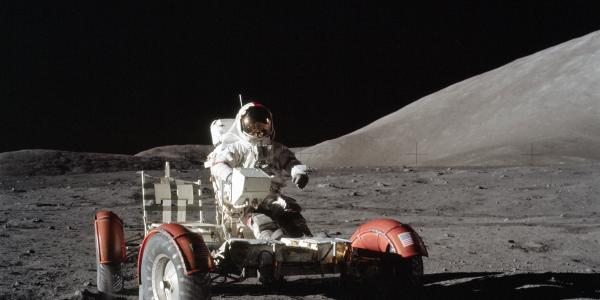Next-generation Lunar Sample Science
NASA had the foresight to lock away some material collected during the Apollo missions for future generations. NASA’s Curation Office stored this material under special storage conditions, out of sight, and unavailable for study. The premise was to save that material for a time when future generations would have access to analytical techniques beyond those available during the Apollo era. That time is now!
In preparation for future lunar missions anticipated later this decade, it is important that we maximize the science derived from samples returned by the Apollo Program. Under NASA’s Apollo Next Generation Sample Analysis (ANGSA) program a selection of those specially stored samples is now available for study. Among those samples is Apollo 17 sample 71036. This lunar volcanic rock was stored frozen since its return in 1972. The release of sample 71036 presents a unique opportunity to study volatiles in a basalt that has been frozen and specially preserved since its arrival on Earth and to compare the results with basalts of similar bulk chemistries that have been stored at room temperature. This exceptional suite of basalts offers a chance to unravel the history of volatile loss on the Moon, from the onset of mineral crystallization through vesicle formation, sampling, and subsequent curation.
We are conducting a detailed study of the 3D mineralogy and textures; the 2D major, minor, and volatile element chemistry of phases in the Apollo 17 basalts; and we are determining the exposure and eruption ages of the basalts. The work plan involves a consortium of institutions and coordination of a myriad of analytical techniques. Our goal is not only to better understand the origin and evolution of the Moon but to also address some outstanding questions regarding the long-term storage and handling of extraterrestrial materials. In this talk I’ll present some of our most recent findings
Host: Kun Wang
Register to attend via Zoom
